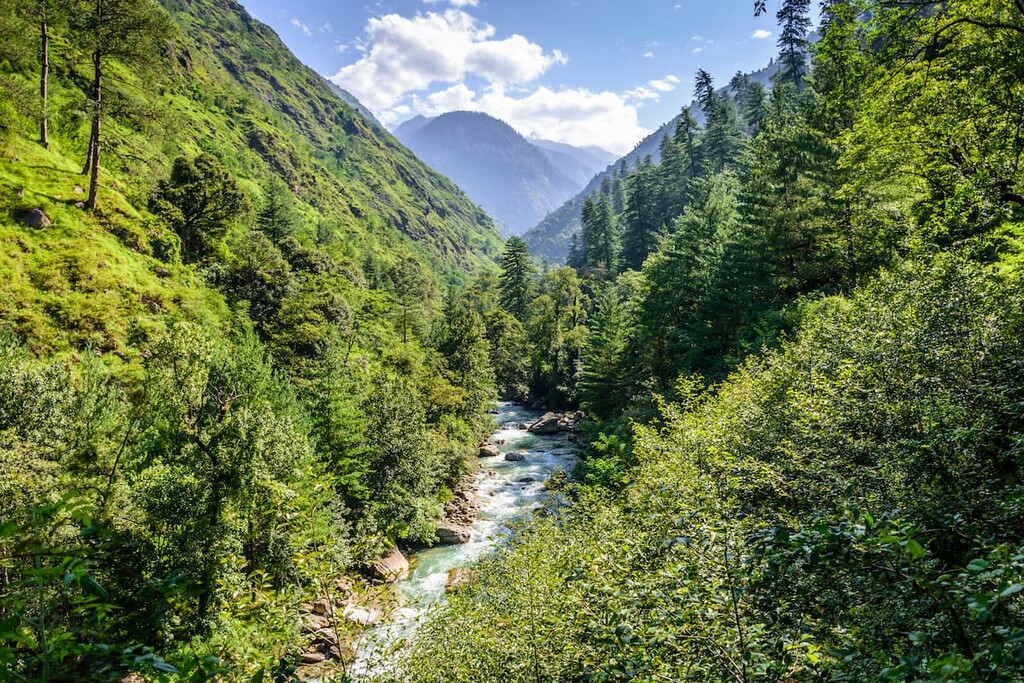Great Himalayan National Park: An Unforgettable Experience
Nestled in the Kullu Valley of the Indian Himalayas, the Great Himalayan National Park (GHNP) is a paradise for nature lovers. Spanning an area of 1,171 square kilometers, the park is home to numerous rare and endangered species of plants, animals, and birds. It is also a UNESCO-listed World Heritage Site, making it one of the most popular destinations for adventure and wildlife enthusiasts.
This article provides an overview of the park, its features, and attractions. Read on to learn all about the GHNP and plan an unforgettable trip.
A Brief History of Great Himalayan National Park
The GHNP was established in 1984 to preserve the unique ecology and biodiversity of the Himalayas. In 2014, it was inscribed as a UNESCO World Heritage Site for its “outstanding natural beauty and its rich and varied biodiversity”.
The park is home to numerous species of animals, birds, and plants, including the snow leopard, musk deer, Himalayan black bear, brown bear, red fox, and more. It is also home to over 300 species of birds.
Features of Great Himalayan National Park
The GHNP is made up of three distinct zones – the core zone, buffer zone, and transitional zone. The core zone is the most protected area of the park and is strictly off-limits to tourists. The buffer zone offers a variety of activities, such as trekking, camping, and wildlife viewing. The transitional zone supports activities such as grazing and logging.
The park is divided into seven distinct eco-regions, including the Tundra, Sub-alpine, Temperate, Sub-tropical, Oak, and Pine forests. Each of these regions is home to a variety of flora and fauna, making it a great destination for nature lovers.
Attractions of Great Himalayan National Park
The GHNP offers a variety of attractions for visitors, including:
- Wildlife Viewing: With over 200 species of birds and 30 species of mammals, the GHNP is a great destination for wildlife viewing. The park is also home to the rare snow leopard and musk deer, making it a must-visit for wildlife enthusiasts.
- Trekking: The park offers numerous trekking routes that are suitable for all levels of experience. The most popular routes are the Pin Parvati Pass, Parvati Valley, and the Chandra Valley.
- Camping: Camping is a great way to experience the beauty of the GHNP. The park has numerous campgrounds that offer a variety of amenities, such as toilets, electricity, and running water.
- Adventure Activities: The park also offers a variety of adventure activities, such as paragliding, rappelling, and rafting.
- religious Sites: The GHNP is home to numerous religious sites, such as the Bhulwaghati and Swargarohini temples.
How to Visit Great Himalayan National Park
The GHNP is easily accessible from all major cities in India. The nearest airport is Kullu, which is about 30 kilometers away from the park. The park can also be reached by road via the NH-21 highway.
The best time to visit the GHNP is between April and June, when the weather is pleasant and the flora and fauna are in full bloom.
Conclusion
The Great Himalayan National Park is a paradise for nature lovers and adventure enthusiasts. It is home to numerous species of plants, animals, and birds, and offers a variety of activities, including trekking, camping, and wildlife viewing. The diverse eco-regions and stunning landscapes make it a UNESCO World Heritage Site, attracting visitors from around the world.
A visit to the Great Himalayan National Park provides a unique opportunity to connect with nature, explore pristine wilderness, and witness the rich biodiversity of the Himalayas. Whether seeking adventure or tranquility, this national park promises an unforgettable experience in the heart of the Indian Himalayas.

